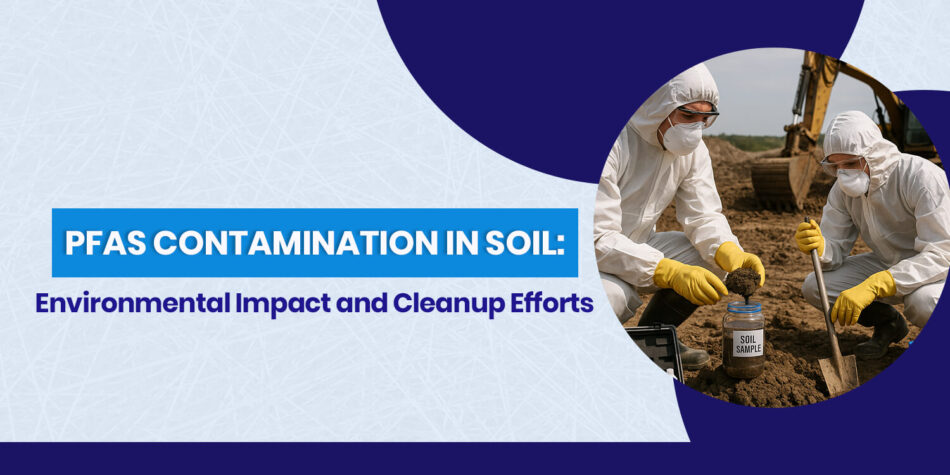Per- and polyfluoroalkyl substances, commonly known as PFAS, have become a buzzword in environmental science and not for good reasons. Often called “forever chemicals” because of their persistence, these compounds have been found in water, air, and soil across the globe. Among these, PFAS contamination in soil is one of the most alarming issues, quietly threatening ecosystems, agriculture, and human health. At Matregenix, we’re dedicated to exploring innovative materials and solutions to address challenges like this and protect our environment.
Understanding PFAS Contamination in Soil
PFAS are a group of synthetic chemicals used in countless industries for their resistance to heat, water, and oil. They’re in everything from firefighting foams and nonstick cookware to waterproof fabrics. But their durability is a double-edged sword. When products containing PFAS are disposed of or break down, these chemicals seep into the soil. Unlike many other pollutants, they don’t degrade easily, leading to PFAS contamination that lingers for decades.
Once in the soil, PFAS can migrate into groundwater or accumulate in crops, making their way up the food chain. This invisible pathway is one reason they’re considered a global environmental crisis.
Environmental Impact of PFAS in Soil
The consequences of PFAS contamination in soil ripple far and wide:
1. Threat to Agriculture
Soils contaminated with PFAS can absorb into crops, meaning the fruits and vegetables we consume may carry trace amounts. Farmers in some regions have already seen fields deemed unsafe for cultivation due to elevated PFAS levels. This directly affects food security and livelihoods.
2. Ecosystem Disruption
Wildlife, from tiny soil microbes to larger mammals, can be exposed to PFAS through the food chain. These chemicals interfere with natural processes, reducing biodiversity and weakening ecosystems that rely on balance to thrive.
3. Long-Term Persistence
Unlike organic pollutants that naturally break down over time, PFAS remain intact. Their half-lives are so long that once contamination occurs, it becomes nearly irreversible without human intervention. This permanence poses long-term challenges for land management and environmental restoration.
Health Concerns Linked to Soil Contamination
While drinking water often gets the most attention, soil plays a critical role in human exposure. Contaminated soil dust can be inhaled, or children playing outdoors might accidentally ingest small amounts. Studies suggest PFAS exposure may be linked to serious health issues, including:
- Immune system suppression
- Hormonal imbalances
- Developmental delays in children
- Increased risk of certain cancers
The insidious nature of PFAS contamination makes it a public health concern that cannot be ignored.
Current Cleanup Efforts and Challenges
Cleaning up PFAS-contaminated soil isn’t straightforward. Because these chemicals resist natural degradation, conventional remediation techniques often fall short. Here are a few methods being explored and implemented:
Soil Excavation and Removal
In some cases, heavily contaminated soil is physically removed and transported to specialized facilities for treatment or safe disposal. While effective for small sites, this method is costly and not practical on a large scale.
Soil Washing
This technique uses solvents or water to separate PFAS compounds from soil particles. It can reduce contamination levels but often requires advanced treatment of the wash water to prevent secondary pollution.
Thermal Treatment
High temperatures can break down PFAS compounds, but the process demands significant energy and infrastructure. It’s not always feasible for widespread contamination.
Emerging Solutions
Researchers, including those at Matregenix, are investigating advanced material technologies, such as nanofiber-based filters and adsorbents, to capture and degrade PFAS more efficiently. These innovative solutions may offer a sustainable path forward for managing PFAS contamination in soil and water.
Why Ongoing Innovation Matters
The scale of the problem requires more than temporary fixes. Governments, environmental agencies, and companies like Matregenix must collaborate to push the boundaries of remediation science. Breakthroughs in material engineering and environmental technology hold the promise of making cleanup more accessible, cost-effective, and eco-friendly.
Looking Ahead
PFAS contamination in soil is not just a scientific challenge it’s a societal one. From protecting farmland and ensuring safe food supplies to safeguarding public health, the stakes are incredibly high. While current cleanup strategies offer some relief, they are often limited, expensive, and time-consuming. That’s why investment in research, sustainable solutions, and preventive measures is critical.
At Matregenix, we believe that by combining innovative technologies with responsible practices, we can mitigate the risks of PFAS and work toward a cleaner, safer future. Addressing this contamination requires persistence, creativity, and global cooperation qualities that the fight against forever chemicals desperately needs.




